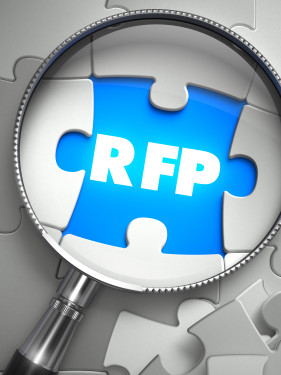
A Request for Proposal (RFP) does more than help a plan sponsor select service providers for different aspects of their plan. RFPs also help meet the requirements under ERISA §404(a)(1), to act in the best interests of the plan participants and to document the methodology used to establish a process of prudence.
In my experience, many plan sponsors only initiate a RFP when purposefully prompted to do so, usually because of a lack of performance from a plan service provider. The plan sponsors are often not aware of the need to conduct a RFP or normal business pressures take precedence over initiating a RPF. I don’t advise plan sponsors to wait for a problem to occur before issuing a RFP. Rather, plan sponsors must be proactive in using RFPs to conduct regular evaluations of service providers and fees.
When a RFP is thorough and done correctly, the process can become streamlined and integrated into a business’s normal operating procedures. Here are some of the basics plan sponsors should know about RFPs.
What goes in a RFP?
A suitable RFP given to prospective service providers will generally include two parts. The first part informs the responding service provider about the plan itself, such as investment objectives, current investments, assets, number of participants, and more.
The second part is more for the vendors to respond to questions about services provided and fees. The plan sponsor gathers, rates and compares all responses from the prospective providers to help determine which service provider is ideally suited for the plan and participants.
How is a RFP different from benchmarking?
In a recent blog post, I discussed the shortcomings of many benchmarking services. The results they provide to plan sponsors can often be misleading and dependent on the methodology used in the benchmarking process. For a plan sponsor, it’s good to keep in mind the limitations of benchmarking services—they’re helpful when testing the waters to see how current providers measure up, but benchmarking itself cannot ensure current fees are reasonable.
RFPs are used to receive direct formal offers from vendors about their willingness and ability to provide a service to your plan at a competitive price. Information gathered in a RFP can help a plan sponsor benchmark different services providers. One way for a plan sponsor to benchmark is to use a fee-only RFP in lieu of a benchmarking service.
Who should conduct the RFP?
Not many plan sponsors go through regular RFP processes and they are especially rare among small- and mid-size companies, based on my experience. The reasons are varied: many plan sponsors just don’t realize that a regular RFP process is a best practice; others may lack the tools or the wherewithal to go through a lengthy proposal and review process; and others simply may not be familiar with service providers in their local market where they can submit their RFP.
These are all valid reasons, but still not acceptable under the rules of fiduciary duty. If a plan sponsor does not want to devote the time or dedicate resources to conducting regular RFPs themselves, it is incumbent upon them to seek out a knowledgeable and objective professional who can help.
This third-party professional should be someone who is not beholden to or compensated by a service provider. Many captive agents/advisors are not likely to provide RFP services for plan sponsors as they normally don’t act in a fiduciary capacity to the sponsor. Additionally, the business model under which these agents/advisors operate precludes them from conducting an open market RFP resulting in outcomes that do not serve participants’ interests or meet the standards of fiduciary responsibility.
How often should a plan conduct a RFP?
I tell plan sponsors that every three years is an appropriate period between full-scale RFPs. But they can conduct partial RFPs in the interim to gather information for benchmarking purposes or about additional services needed by the plan. At a minimum, conducting a fee-only RFP on an annual basis is recommended.
What should you do with RFP results?
The outcome of a RFP can help you in more ways other than identifying good service providers. Ideally, the RFP results will reveal your plan offers a good combination of services and fees to participants and there are no reasons to make changes.
If you are happy with current service providers but discover their fees are on the high side in the marketplace, you can use the RFP results to negotiate a better price.
But if through the RFP process you decide to make a change in plan providers, don’t be discouraged by the time or cost of doing so. The real cost to a plan sponsor comes in not changing and facing potential lawsuits alleging breach of fiduciary duty. Just ask Novant or Tibble or the scores of other plan sponsors who have settled cases for millions of dollars or fought lengthy and expensive court battles if they think a RFP process is too long or too costly.
The investment a plan sponsor makes in conducting a robust and frequent RFP will pay dividends in the long run by helping to fend off lawsuits, survive Department of Labor audits, and avoid personal liability for plan fiduciaries. Most importantly, regular RFPs will help plan sponsors continue to serve the best interest of their participants.

Join the conversation
We would love to hear from you